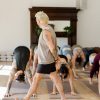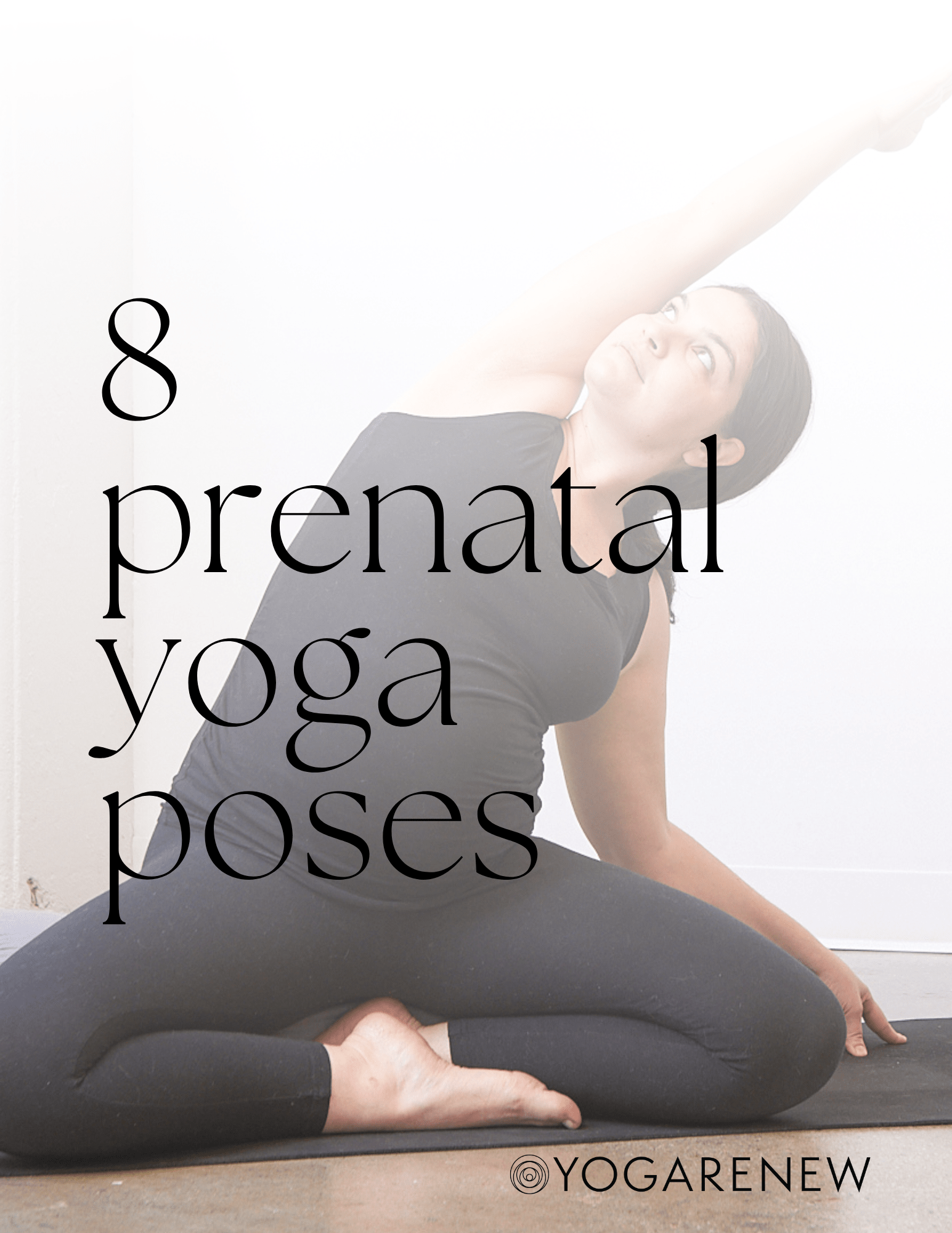
Pregnancy is a time of immense change, growth, and anticipation. As your body embarks on the incredible journey of creating life, prenatal yoga can be a gentle yet powerful way to stay active, alleviate discomfort, and prepare both your body and mind for childbirth. Incorporating yoga into your prenatal care can improve sleep, reduce stress and anxiety, increase the strength and flexibility of the muscles needed for childbirth, and decrease lower back pain, nausea, and headaches. Here, we explore eight popular prenatal yoga poses that are celebrated for their benefits during pregnancy. Remember to consult with your healthcare provider before starting any new exercise routine during pregnancy.
1. Cat-Cow Stretch (Marjaryasana-Bitilasana)
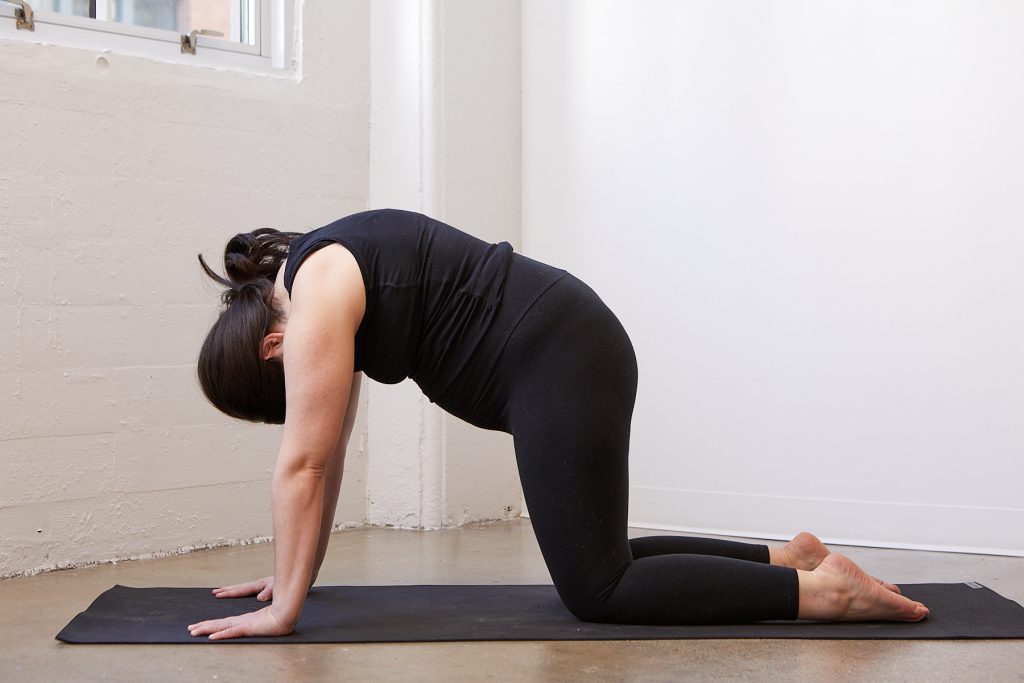
Cat Pose
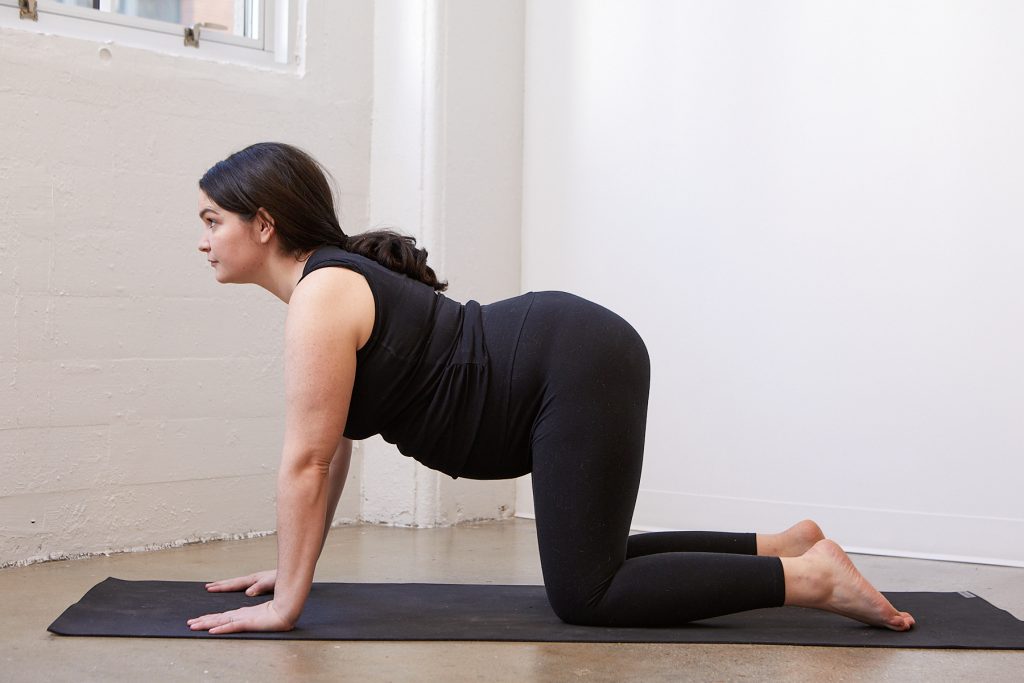
Cow Pose
This gentle flow between two poses helps to warm up the spine and relieve back tension by encouraging flexibility in the back.
How to Do It:
- Start on your hands and knees in a tabletop position, ensuring your wrists are under your shoulders and your knees are under your hips.
- As you inhale, arch your back, tilting your tailbone and chin upwards (Cow Pose).
- As you exhale, round your back, tucking your chin to your chest, and drawing your belly in (Cat Pose).
- Continue flowing between these two poses for several breaths.
2. Seated Side Bend (Parsva Sukhasana)
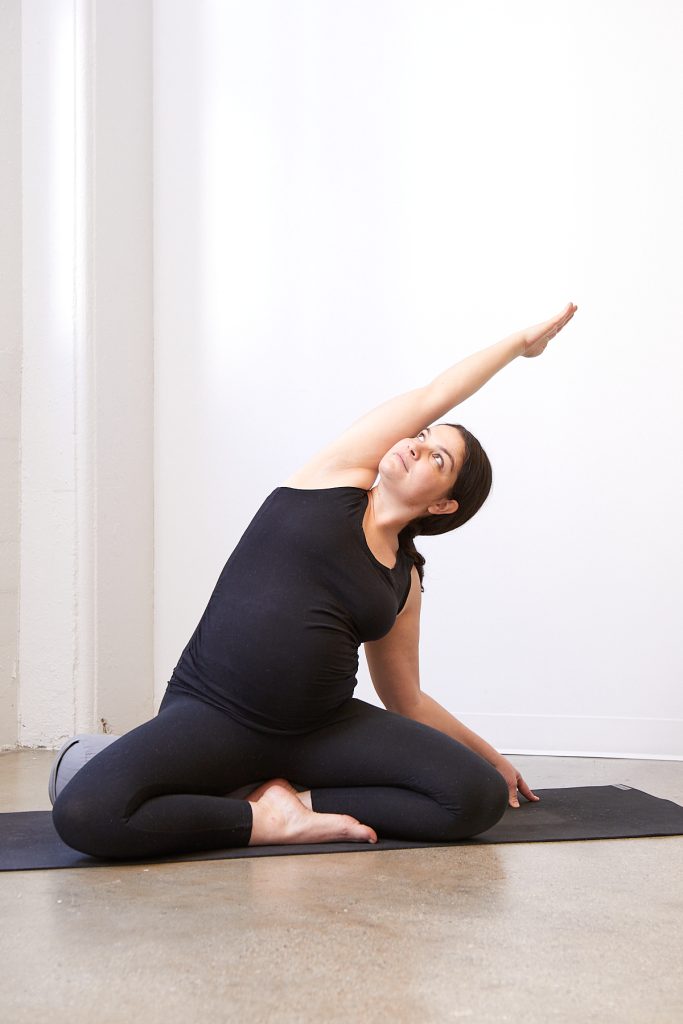
Seated Side Bend
Seated side bend stretches the torso and spine, providing a gentle stretch that is especially beneficial for relieving the tightness in the upper body.
How to Do It:
- Sit comfortably with your legs crossed.
- Place your left hand on the floor beside you, inhale, and extend your right arm over your head, bending towards the left.
- Keep your right buttock on the floor to ensure a gentle stretch along your right side. Hold for a few breaths, then switch sides.
3. Supported Pigeon (Salamba Eka Pada Rajakapotasana)
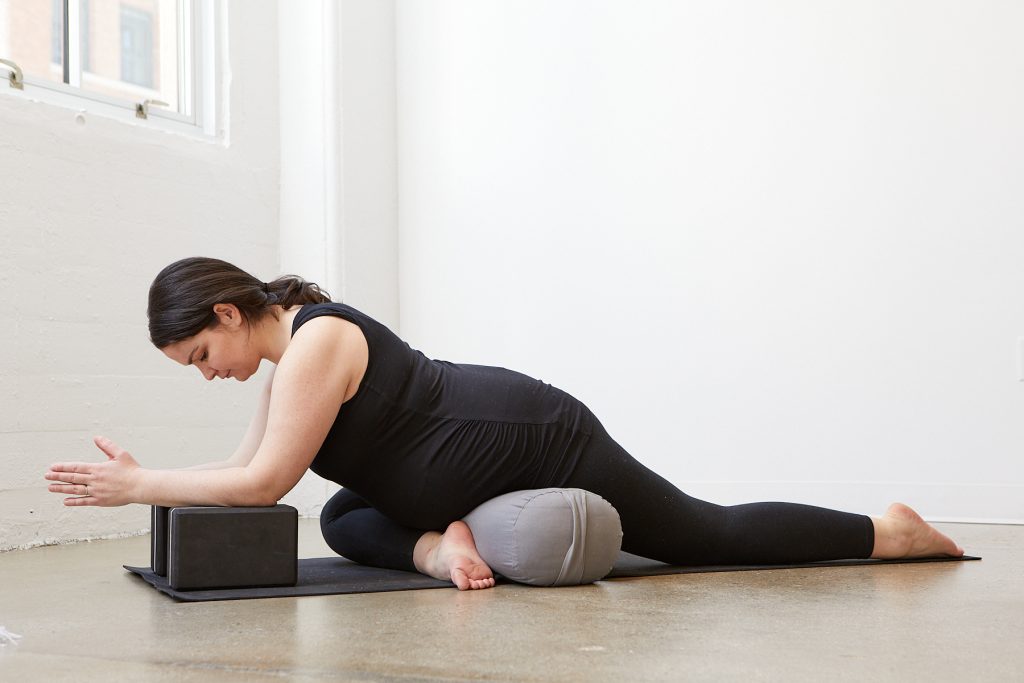
Supported Pigeon
An excellent pose to help still the mind, Supported Pigeon helps to relax the body and ease lower back tension.
How to Do It:
- Lay a bolster across the center of your mat.
- Bring one knee forward over the bolster.
- Support your forearms by placing blocks underneath them.
- Stretch the opposite leg out behind you.
4. Warrior II (Virabhadrasana II)
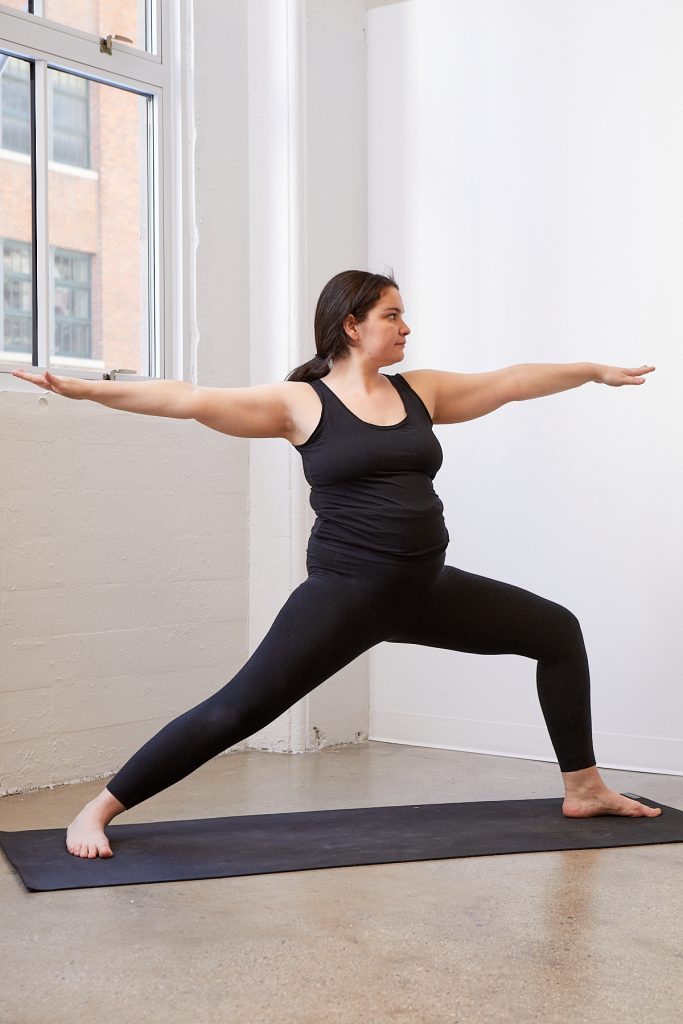
Warrior II
Warrior II is a standing pose that strengthens the legs and arms, improves concentration, and increases stamina.
How to Do It:
Stand with your feet wide apart, extending your arms parallel to the floor.
Turn your right foot out 90 degrees and your left foot in slightly.
Bend your right knee, ensuring it’s directly over your right ankle.
Gaze out over your right hand. Hold for several breaths, then switch sides.
5. Triangle Pose (Trikonasana)
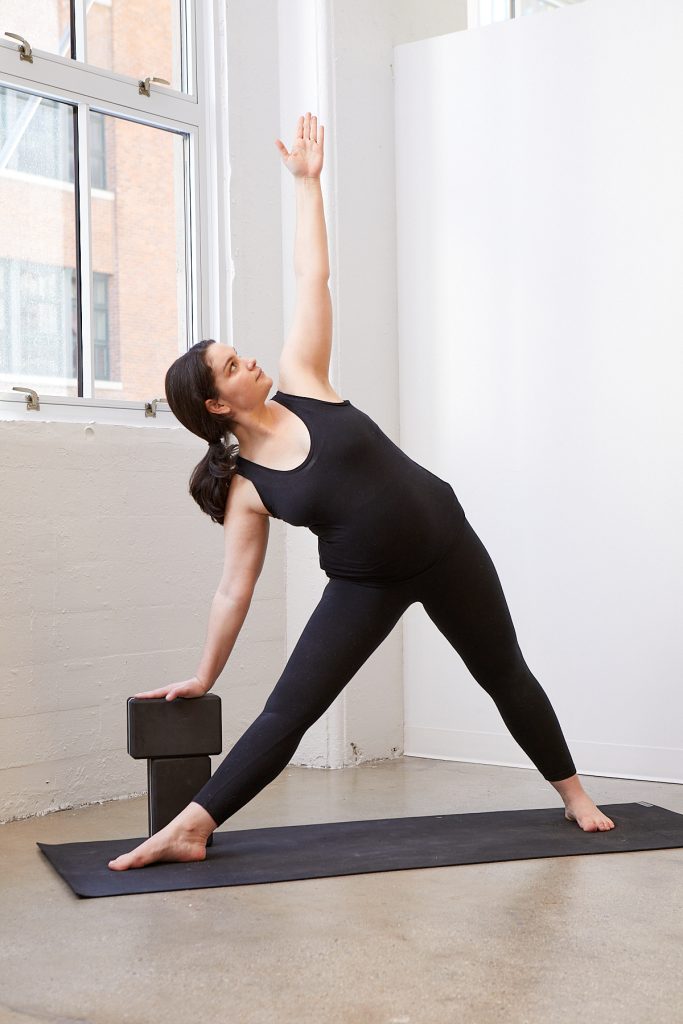
Triangle Pose with 2 Blocks (instead of grabbing the shin or ankle)
Triangle Pose stretches and strengthens the thighs, knees, and ankles while also stretching the hips, groin, hamstrings, and calves; shoulders, chest, and spine.
How to Do It:
- From Warrior II, straighten your front leg.
- Extend your torso to the right, then tilt from the hip joint, reaching your right hand down to your ankle, a yoga block, or the floor.
- Extend your left arm toward the ceiling. Turn your gaze upward, if comfortable. Hold for several breaths, then switch sides.
6. Downward Facing Dog (Adho Mukha Svanasana)
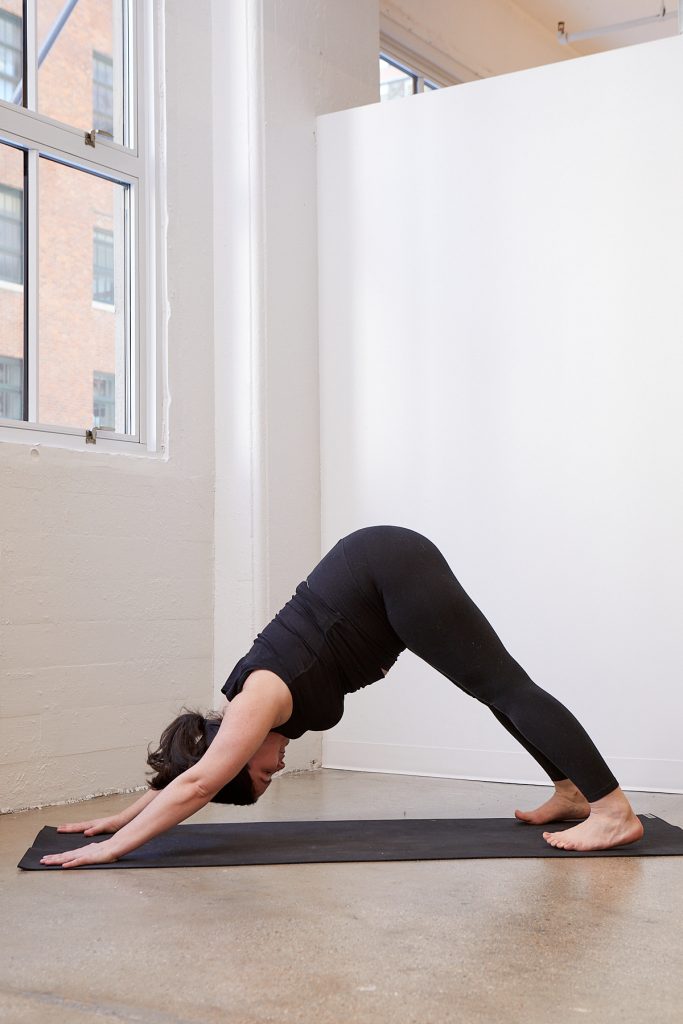
Downward Facing Dog
A classic – this pose will help empower your pregnant students to be ready for a any vinyasa class.
How to Do It:
- Start in a table-top position (wrists under shoulders, knees under hips).
- Send your hands forward one palm print in front of where they are.
- Send your legs straight back.
- Tucks your toes under.
- Send your hips up & back (bring a bend to the knees if this feels more accessible).
7. Pigeon Pose (Eka Pada Rajakapotasana)
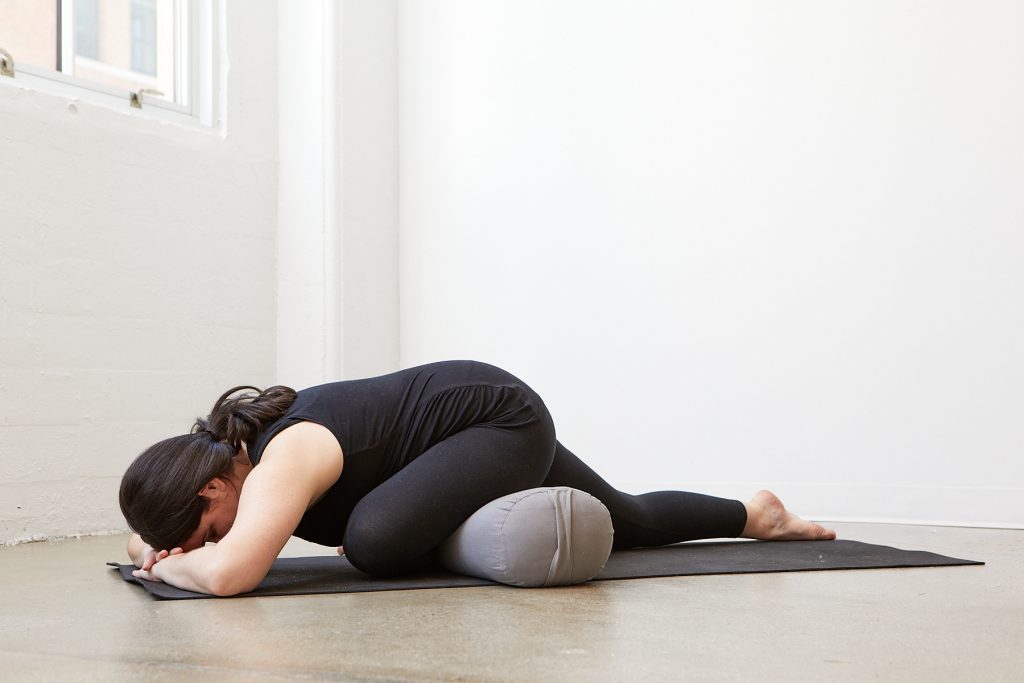
Pigeon Pose (with only a bolster – option to remove the bolster)
This pose is excellent for opening up the hips and relieving sciatic pain, which is common in pregnancy.
How to Do It:
- Start in a tabletop position.
- Bring your right knee forward towards your right hand and allow your right foot to come towards the left hand.
- Slide your left leg back, keeping the leg straight, and lower your hips toward the floor.
- Stay upright or fold forward over your right leg. Hold for several breaths, then switch sides.
8. Bound Angle Pose (Baddha Konasana)
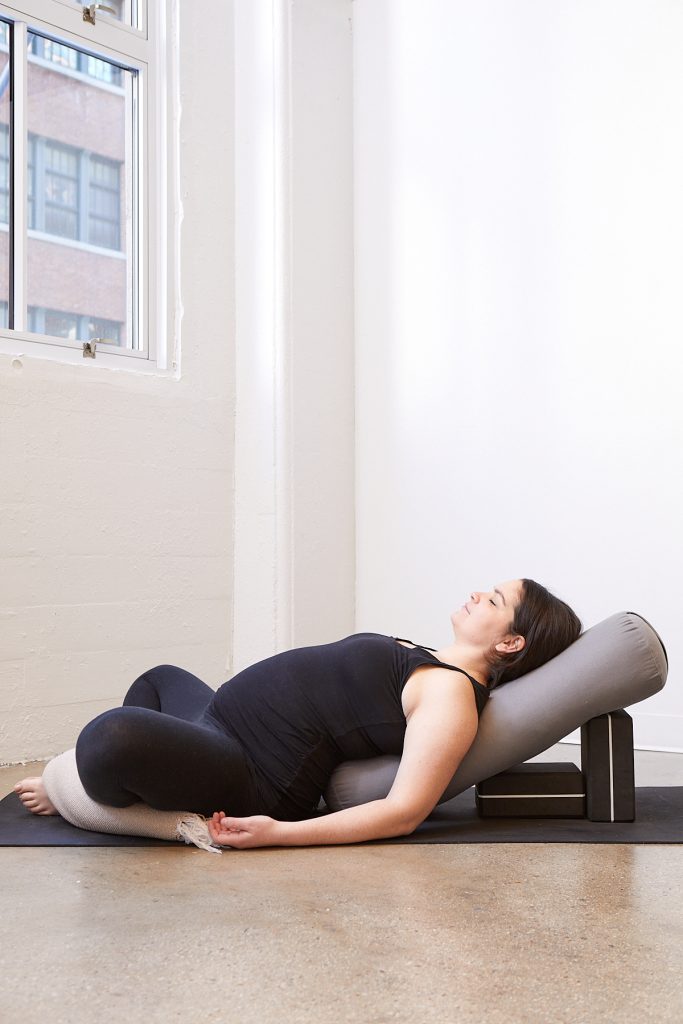
Bound Angle Pose with the Support of a Rolled Blanket, 2 Blocks, and a Bolster
Bound Angle Pose helps open the hips and groin and can be very soothing for lower back discomfort.
How to Do It:
- Sit with your spine straight and legs extended in front of you.
- Bend your knees and bring the soles of your feet together, letting your knees drop to the sides.
- Hold your feet or ankles and gently hinge forward from your hips, if comfortable.
Safety Tips for Prenatal Yoga
- Listen to Your Body: Avoid any poses that cause discomfort or pain.
- Stay Hydrated: Drink plenty of water before, during, and after practicing yoga.
- Use Props: Yoga blocks, blankets, and bolsters can provide extra support and comfort.
- Avoid Overstretching: Relaxin, a hormone produced during pregnancy, increases flexibility but can also lead to over-stretching and injury.
- Avoid Lying Flat on Your Back: Especially after the first trimester, as this can reduce blood flow to the uterus.
Prenatal yoga is not just about maintaining fitness; it’s a tool for nurturing your body and connecting with your baby during this transformative time. By practicing these eight prenatal yoga poses, you’re taking a step towards a healthier, more comfortable pregnancy, and potentially a smoother childbirth. Always remember to check with your healthcare provider before beginning any new exercise regimen during pregnancy.


